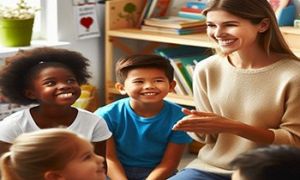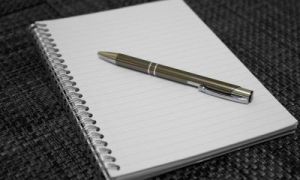

Unfair dismissal can feel overwhelming, but knowing the process helps you take action with confidence. The Fair Work Commission (FWC) is the national workplace relations tribunal that deals with these claims. Here’s a clear roadmap.
In late 2024, the Australian Government announced a 15% wage increase for early childhood educators. The so‑called “15% grant” is actually a government‑funded wage subsidy that delivers a 15% pay rise for early childhood educators. Services must apply for the funding, agree to fee‑cap conditions, and pass the increase directly to staff. Once the grant period ends, services lose the subsidy and must sustain wages through normal operations.
Resigning from a role in early childhood education is a natural part of career progression. Whether you’re moving on to new opportunities, prioritising wellbeing, or navigating personal changes, it’s important to resign with clarity, professionalism, and dignity. This guide outlines notice periods, signs it may be time to leave, what to say, how to write a resignation letter, and strategies for managing difficult situations.
Early childhood educators are being unfairly targeted by fear-driven narratives and reactive policy changes, despite evidence showing they are among the safest and most dedicated professionals in the education system.
Early childhood education is facing a crisis that cannot be solved with more training modules or compliance checklists. Educators are not leaving because they lack skills or passion. They are leaving because they are being treated as expendable, micromanaged to exhaustion, and denied the respect they deserve as professionals and as people.
In early childhood education, numbers matter. Ratios often dominate policy debates, but group size, the total number of children in a room, can be just as critical. As policymakers revisit standards, group size caps are emerging as a safeguard for quality care, protecting both children’s developmental needs and educators’ well-being.
In early childhood education, leadership is not just about titles; it’s about responsibility, trust, and the ability to step in when needed. One role that often sparks discussion is the Second-in-Charge (2IC). What does this position really mean, and how can services set clear expectations to support both staff and children?
In the quiet hum of a weekday morning, something felt off. Preschool doors opened, but classrooms remained silent. No greetings. No redirection. No educators. And suddenly, the world felt the consequences.
This wasn’t a strike. It was a reckoning.
Early childhood educators, those often dismissed as “just babysitters,” didn’t show up. Not because they didn’t care, but because the system stopped caring first. Their passion had been trivialized. Their safety was compromised. Their pay was insulting. And when they stepped back, everything else fell apart.
The recent announcement by Minister for Education Jason Clare that childcare centres will receive funding to close early for mandatory child safety training. But let’s be clear—child protection training is not new. Educators already undertake annual courses and ongoing professional development throughout the year. You cannot work in this industry without it. Training is essential, but it is not where the real problems begin.
Child protection courses are already mandatory. The real crisis?
Too many children per educator
Understaffed centres
Lack of inclusion support for children with disabilities
Until ratios drop and staffing rises, training alone won’t fix child safety.
Children experience adult communication not just through words, but through tone, emotional energy, facial expression, and body language. Two interactions may be equally loud, yet feel completely different to a child. Understanding this distinction is essential for safeguarding, trauma‑informed practice, and meeting regulatory obligations.
 Here is the list of the EYLF Learning Outcomes that you can use as a guide or reference for your documentation and planning. The EYLF… Read More
Here is the list of the EYLF Learning Outcomes that you can use as a guide or reference for your documentation and planning. The EYLF… Read More
 The EYLF is a guide which consists of Principles, Practices and 5 main Learning Outcomes along with each of their sub outcomes, based on identity,… Read More
The EYLF is a guide which consists of Principles, Practices and 5 main Learning Outcomes along with each of their sub outcomes, based on identity,… Read More
 This is a guide on How to Write a Learning Story. It provides information on What Is A Learning Story, Writing A Learning Story, Sample… Read More
This is a guide on How to Write a Learning Story. It provides information on What Is A Learning Story, Writing A Learning Story, Sample… Read More
 One of the most important types of documentation methods that educators needs to be familiar with are “observations”. Observations are crucial for all early childhood… Read More
One of the most important types of documentation methods that educators needs to be familiar with are “observations”. Observations are crucial for all early childhood… Read More
 To support children achieve learning outcomes from the EYLF Framework, the following list gives educators examples of how to promote children's learning in each individual… Read More
To support children achieve learning outcomes from the EYLF Framework, the following list gives educators examples of how to promote children's learning in each individual… Read More
 Reflective practice is learning from everyday situations and issues and concerns that arise which form part of our daily routine while working in an early… Read More
Reflective practice is learning from everyday situations and issues and concerns that arise which form part of our daily routine while working in an early… Read More
 Within Australia, Programming and Planning is reflected and supported by the Early Years Learning Framework. Educators within early childhood settings, use the EYLF to guide… Read More
Within Australia, Programming and Planning is reflected and supported by the Early Years Learning Framework. Educators within early childhood settings, use the EYLF to guide… Read More
 When observing children, it's important that we use a range of different observation methods from running records, learning stories to photographs and work samples. Using… Read More
When observing children, it's important that we use a range of different observation methods from running records, learning stories to photographs and work samples. Using… Read More
 This is a guide for educators on what to observe under each sub learning outcome from the EYLF Framework, when a child is engaged in… Read More
This is a guide for educators on what to observe under each sub learning outcome from the EYLF Framework, when a child is engaged in… Read More
 The Early Years Learning Framework describes the curriculum as “all the interactions, experiences, activities, routines and events, planned and unplanned, that occur in an environment… Read More
The Early Years Learning Framework describes the curriculum as “all the interactions, experiences, activities, routines and events, planned and unplanned, that occur in an environment… Read More

Positive phrases play a crucial role in children's growth because they help nurture their emotional...
See more...
Celebrating New Year with young children can be a delightful experience filled with fun activities...
See more...
One of the most important types of documentation methods that educators needs to be familiar...
See more...© 2009-2025 Aussie Childcare Network Pty Ltd. All Rights Reserved.

